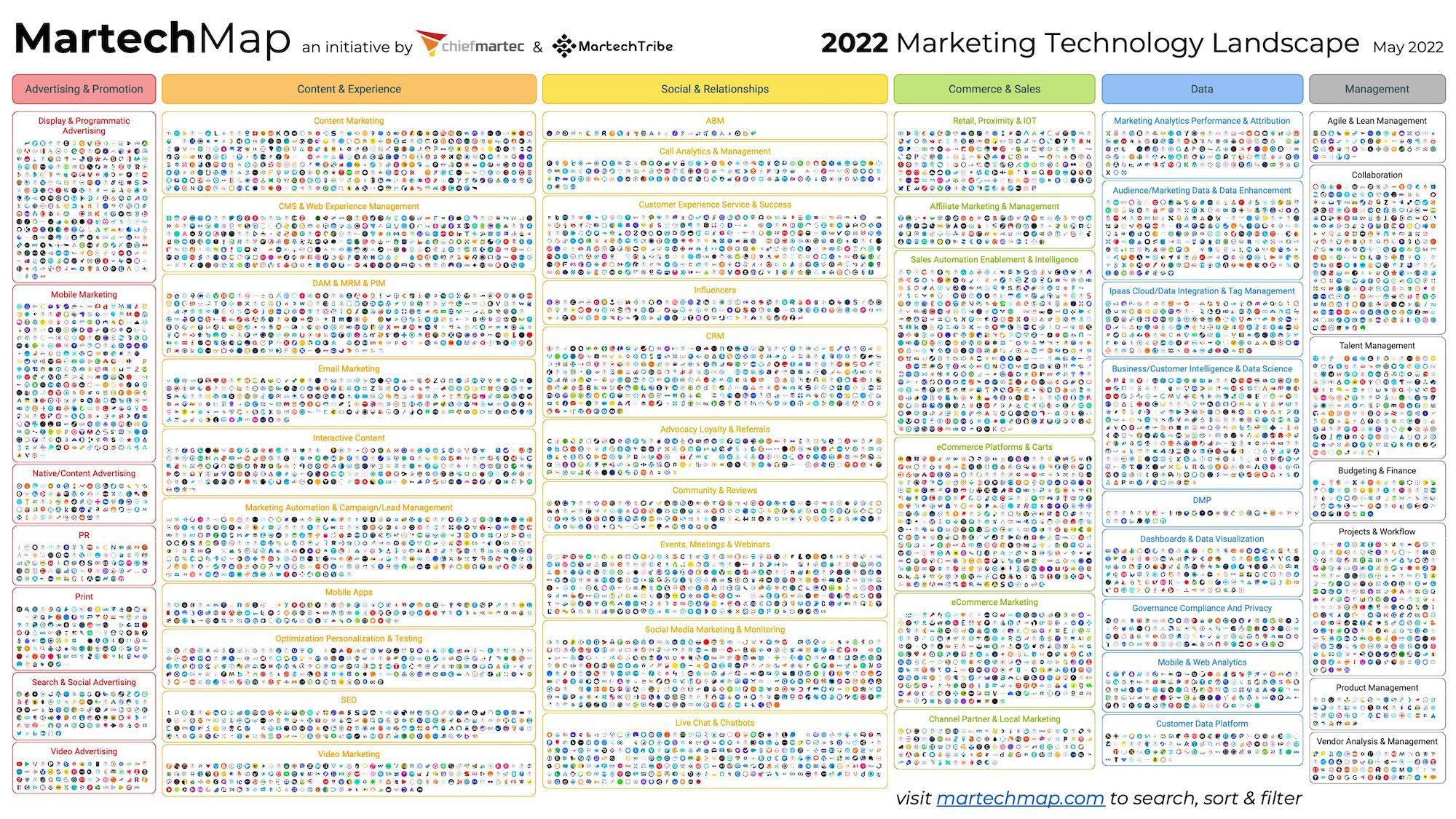As organizations rely on enterprise software and emerging technologies, creating a digital strategy has become a critical pillar of business success.
87% of companies recognize that digital transformation presents an opportunity to differentiate themselves from competition. Gartner research reveals that 56% of CEOs have experienced a direct link between digital initiatives and higher profits. These numbers highlight how important digital strategies are for building a resilient and successful business.
Creating a digital strategy involves more than implementing new technology—it reimages your business from the ground up, tying software investments to business outcomes, and transforming operations with enterprise software and new technologies.
It begins with a deep understanding of your business, allowing you to identify your biggest needs and tie digital investments to business outcomes. From there, you can develop a plan that aligns with your goals and helps you achieve them precisely. This approach sets the stage for sustainable growth and lasting success.
In this article, we’ll break down the key elements of a digital strategy, guide you through how to build one, discuss the strategic goals that drive these efforts, and share real-world examples from various industries.
What Is a Digital Strategy?
A digital strategy is a plan that integrates technology into a business to create efficient processes, engage effectively with customers, and stay competitive in a digital world. It involves transforming how a business operates and delivers value, understanding customer needs, streamlining operations, leveraging data, and fostering an agile and innovative company culture.
Digital Strategy vs. Digital Transformation vs. Digital Innovation
Understanding the digital landscape means getting clear on some key terms that often overlap but have distinct meanings: “digital strategy,” “digital innovation,” and “digital transformation.” Each plays a different role in how a business can use technology to reach its goals.
Digital strategy acts as an IT roadmap, guiding how a company adopts and uses enterprise software and IT technologies to improve operations, meet changing market demands, and boost overall performance. It’s about aligning tech initiatives with business goals and customer needs, ensuring that technology investments lead directly to better outcomes. A solid digital strategy helps identify the right technologies, outlines how to implement them, and leverages them to gain a competitive edge
Digital innovation, on the other hand, is about introducing new digital technologies or using existing ones in fresh, creative ways to drive significant improvements or open up entirely new avenues for success. This could mean developing new digital products, services, or business models. It often requires a culture open to experimentation, creativity, and risk-taking. It’s about using technology to disrupt traditional business models or create new market opportunities.
Digital transformation is a comprehensive reimagination of a business’s activities, processes, and models to harness digital technologies’ potential fully. Unlike a digital strategy, which is more about planning and alignment, digital transformation is about the changes needed to integrate technology into every part of the business, fundamentally reshaping how it operates and delivering value to customers.
While these terms are connected and sometimes used interchangeably, they represent different facets of how businesses use digital technologies to drive growth and efficiency. Digital strategy sets the course, digital innovation brings new technological applications to life, and digital transformation involves the holistic changes that help a business evolve and thrive in a digital world.
Key Elements of a Digital Strategy
Understanding the critical elements of a digital strategy is crucial for any organization looking to navigate the complex digital landscape effectively. These foundational components set the stage for implementing powerful, cohesive digital actions aligning with business objectives.
Here are the key elements of a digital strategy that support and enhance the overall digital framework:
- Customer experience: Prioritizing CX enables organizations to create user-friendly, tailored experiences to meet consumer expectations and create frictionless workflows.
- Data analytics: Leveraging data through comprehensive analytics enables businesses to make informed decisions, foresee market trends, and personalize customer interactions.
- Digital technology integration: Seamlessly integrating advanced digital technologies into business operations enhances efficiency and opens new avenues for innovation.
- Digital security measures: Protecting data and systems with robust security protocols is critical to maintaining trust and ensuring the safe operation of digital infrastructures.
- Content and social media strategy: Developing a coherent content strategy, coupled with effective social media engagement, extends brand reach and deepens customer relationships.
- Mobile-first approach: Designing digital interfaces and interactions with a mobile-first perspective ensures accessibility and relevance in a smartphone-dominated world.
- E-commerce optimization: Enhancing e-commerce platforms to provide seamless shopping experiences boosts sales and accommodates consumer preferences for online transactions.
- Digital skills and culture: Cultivating a digital-first culture and upskilling employees to thrive in digital environments are essential for driving innovation and maintaining competitive advantage.
How to Create a Digital Strategy Roadmap
The path to building a digital strategy is complex, but CIOs can follow the following steps to start building their digital strategy roadmap:
1. Choose a leader to own your digital strategy
Your digital strategy needs a solid foundation, starting with a strong leader. This person should deeply understand enterprise software and IT technologies, your company’s products or services, your buyer persona, your business outcomes, and your vision for the future.
With a dedicated leader, you can centralize and mobilize your digital transformation efforts effectively, allowing you to start planning a tactic IT roadmap to re-imagine internal business processes and operations with enterprise software.
2. Assess how digitization currently affects your business
Start by analyzing how digitalization impacts your business and industry. Break down your digital strategy into two key areas: attack and defend.
- Attack strategies focus on pushing your company forward with new offerings, revenue-generating methods, or innovative technology implementation.
- Defend strategies aim to protect your business from digital threats and leverage digital transformation tools to ensure stability and security.
Understanding these two aspects will help you build a digital strategy moat that shields you from the competition and acts as a critical company differentiator against your competitors.
3. Explore the technology landscape
The tech landscape is vast, with advancements like AI, big data, blockchain, and more already influencing enterprise operations. Your digital leaders must dive deep into this landscape, exploring the many enterprise software options available. You can pinpoint which digital transformation tools will significantly impact your business by researching and shortlisting the right technologies and vendors.

Above: The 2022 marketing technology landscape (Martech) alone consists of over 9,900 SaaS platforms – up 24% from 2022 (ChiefMartech).
4. Apply new technologies to identify opportunity areas
Once you’ve identified potential digital tools and technologies, consider how they can be applied within your business. Look at how similar companies within and outside your industry use these tools. This exploration should reveal new opportunities for your digital strategy to thrive, allowing you to focus your efforts where they’ll be most effective.
5. Set ambitious goals and place big bets on your digital strategy
Your digital strategy should aim high. While setting achievable goals is important, don’t shy away from being ambitious. Companies like Netflix, Amazon, and Apple didn’t achieve digital success by playing it safe. They set big goals and placed significant bets on their digital strategies. Take inspiration from these success stories and envision how bold moves could propel your company to the next level.
6. Evaluate your company’s digital skillsets and address skill gaps
Implementing new digital technologies often comes with the challenge of upskilling your workforce. This is where a skill gap analysis becomes crucial. By assessing your team’s current skillsets, you can identify gaps and create personalized learning paths to bridge them. Upskilling and reskilling are key to ensuring your team has the competencies to execute your digital strategy effectively.
7. Invest in a digital adoption strategy to facilitate change
The final step in your digital strategy is developing a robust digital adoption plan. This involves driving the adoption of new digital tools across your workforce, users, and customers. A successful adoption strategy requires careful change management to onboard, train, and support everyone involved. Remember, even the best technologies can fall short if there’s resistance or hesitancy. Focusing on user adoption will pave the way for successful strategy execution and long-term digital transformation.
IDC’s Future of Work Trends 2024 report predicted that by 2027, 80% of G1000 organizations will utilize a digital adoption platform (DAP) to maximize technology ROI. DAPs enable end-users with in-app guidance and support in the flow of work with guided experiences like Task Lists, Flows, Smart Tips, and Self Help. Track software usage to understand adoption levels, identify areas of friction, and benchmark time-to-completion for core tasks. This empowers leaders to take a data-driven approach to improving application experiences and maximize technology value realization.
Goals of Digital Strategy
Setting clear, actionable goals is the backbone of a successful digital strategy. They ensure that every technological move and process improvement supports your broader ambitions, turning big ideas into real results that drive your organization’s success.
Here’s what a well-crafted digital strategy can help you achieve:
1. Expand your business offerings
A digital strategy can help you uncover new revenue streams and enhance existing products by leveraging the latest technologies. By appointing a leader with digital expertise and building a specialized strategy team, your business can stay ahead of market challenges and seize new opportunities. This approach keeps your company at the cutting edge, ready to capitalize on emerging trends.
Your digital strategy team plays a vital role by continually exploring the tech landscape to find innovations that align with your goals. This keeps your business agile, allowing you to quickly adapt to changes and scale operations as new opportunities arise, ensuring sustained growth and market relevance.
2. Anticipate customer expectations
A proactive digital strategy helps you stay ahead of evolving customer expectations. You can gain insights into their preferences and behaviors by utilizing advanced tools to gather and analyze customer data. This allows you to tailor your offerings, making customer interactions more personalized and convenient, which enhances satisfaction and loyalty.
Implementing cutting-edge solutions meets and often exceeds customer expectations, fostering stronger connections and long-term loyalty to your brand.
3. Establish a competitive edge
Your digital strategy should embrace innovation and be ready to take risks to establish a competitive edge. The goal is to create distinctive products or services that set your company apart from competitors. Whether through new business models, disrupting traditional practices, or introducing transformative technologies, these efforts can define your brand and secure your market position.
Embedding this innovation-driven approach into your company culture encourages creative thinking and bold initiatives, which can lead to significant market differentiation. This attracts customers and sets a high barrier for competitors, helping you maintain a strong market lead.
4. Optimize internal processes
Focusing your digital strategy on optimizing internal processes is about boosting efficiency and effectiveness. Integrating modern digital tools allows you to automate routine tasks, enhance data accuracy, and streamline communication across departments. These improvements reduce costs and increase productivity, allowing your team to focus on more valuable activities.
Regularly revisiting and adjusting these strategies ensures they remain effective as your company’s needs and the technological landscape evolve. Staying adaptable keeps your business competitive and efficient.
5. Safeguard against market shifts and threats
A forward-looking digital strategy safeguards against market shifts and external threats. By anticipating disruptions and adapting swiftly, your business can stay resilient. This strategic focus covers immediate defensive actions and includes long-term planning to navigate future market changes successfully.
By maintaining a proactive stance, you can use your digital strategy not just for defense but as a tool for spotting and seizing opportunities in times of change, ensuring your company’s ongoing relevance and success.
6. Enhance data-driven decision making
Making decisions based on data-driven insights is crucial for any digital strategy. By integrating advanced data analytics, big data, and machine learning, your business can identify patterns, forecast trends, and base decisions on solid evidence. This approach enhances decision-making speed and accuracy across all departments, from marketing to operations.
Creating a culture that values data literacy among employees ensures that data-driven strategies are implemented at every level. This supports better day-to-day decisions and aligns long-term planning with real-time analytics and predictions.
7. Improve customer insights
Gaining more profound insights into customer behaviors and preferences allows you to effectively tailor products and marketing strategies. Using sophisticated data analytics tools and CRM systems, you can continuously capture and analyze customer interactions across various channels. This helps you understand their needs more accurately, enabling you to offer personalized experiences that boost satisfaction and loyalty.
These insights also allow you to anticipate customer needs before they arise, giving you a competitive edge in developing new products and services. By staying ahead of the curve, your business can innovate proactively, swiftly meeting market demands and driving sustained growth.
8. Foster innovation and agility
A digital strategy that fosters innovation and agility transforms how your organization approaches change. Adopting agile methodologies and digital tools that support fast prototyping and iterative development allows your business to respond quickly to market shifts and customer preferences. Innovation labs, hackathons, and collaborative platforms can stimulate creativity and accelerate the exploration of new ideas.
Encouraging a culture of risk-taking and fast learning is essential for innovation. By reducing the time and cost of bringing new concepts to market, your company can experiment more freely, quickly refining and improving new ideas. This agility ensures that your organization can pivot when needed and seize new opportunities as they emerge.
9. Achieve scalability
Scalability is a critical goal of any digital strategy. It involves designing systems and infrastructure that can handle growth without compromising performance. Adopting cloud computing solutions and modular software architectures can provide the flexibility needed to scale efficiently as demand increases.
A well-executed scalability strategy allows your business to grow smoothly, ensuring that high-quality services are maintained even as your customer base expands. This supports ongoing growth and helps your company manage new challenges without losing momentum.
10. Promote sustainability
Integrating sustainability into your digital strategy is increasingly essential for modern businesses. Digital technologies like AI, IoT, and analytics can help optimize operations, reduce resource use, and enhance energy efficiency.
For example, intelligent systems can manage energy consumption in real time, while analytics can streamline supply chains to minimize waste and emissions. A digital strategy that prioritizes sustainability strengthens your brand and attracts environmentally conscious consumers, employees, and stakeholders. By committing to responsible practices, your business builds trust and loyalty, aligning profitability with environmental stewardship.
Examples of Digital Strategies
Exploring real-world examples of digital strategy, innovation, and transformation gives us a clear picture of how businesses successfully navigate the digital landscape. Below, we’ll look at several case studies highlighting how organizations have effectively harnessed digital tools to drive growth, boost efficiency, and redefine their industries.
1. Takealot
Takealot, a leading e-commerce platform, has significantly streamlined its operations by automating third-party sellers’ onboarding and training process. This automation speeds up the time it takes for new sellers to start selling while ensuring consistency and quality in product listings across the platform. As a result, Takealot has scaled its operations without compromising service quality or efficiency.
By automating these critical processes, Takealot supports a growing number of sellers while maintaining a seamless shopping experience for customers. This approach empowers sellers with the tools and knowledge to succeed, creating a dynamic and competitive marketplace. Takealot’s strategic enhancement of its digital capabilities highlights its commitment to innovation and efficiency, solidifying its leadership in the e-commerce sector and making it a preferred platform for sellers and buyers.
2. Disney+
When Disney launched its streaming service, Disney+, it hit the market at the perfect time. Recognizing the shift in viewer habits and the rise of streaming, Disney introduced a platform that offered its vast library of beloved classics and featured exclusive new content. The timing was impeccable, coinciding with a global shift towards home entertainment, which led to a rapid increase in subscribers and a strong presence in the competitive streaming market.
Disney+ isn’t just about streaming content; it offers an immersive Disney experience. Subscribers gain access to more than just shows—they get a passport to the entire Disney universe, with perks like early access to new releases, exclusive behind-the-scenes content, and special benefits at Disney theme parks and stores. This integration transforms casual viewers into loyal fans, keeping Disney+ at the forefront of digital entertainment and making it a prime example of strategic digital innovation.
3. ManpowerGroup
ManpowerGroup’s transition to a cloud-based Applicant Tracking System (ATS) marked a significant modernization of its recruiting process. By moving away from outdated tools and adopting cloud technology, ManpowerGroup streamlined its recruitment process and improved the experience for both recruiters and candidates. This shift allows for greater scalability and flexibility, helping the company adapt quickly to changes in the job market and candidate expectations.
This digital transformation also enhances data analysis and management, giving ManpowerGroup valuable insights that were previously difficult to obtain. With the new cloud ATS, the company can now make more informed decisions about recruitment strategies, identify trends in candidate sourcing, and optimize their recruitment channels. ManpowerGroup’s proactive adoption of new technologies demonstrates its commitment to staying ahead in the workforce solutions industry, ensuring it remains competitive and responsive to global employment trends.
4. Adobe
Adobe’s move from selling on-premise software to offering cloud-based services is a prime example of digital evolution. By transitioning to Adobe Creative Cloud, the company revolutionized how creative professionals access and use its tools. The shift to a subscription-based model opened Adobe’s offerings to a broader audience, providing more flexible pricing and the ability to scale services to users’ needs. This pivot boosted Adobe’s revenue through recurring subscriptions and made professional-grade creative tools more accessible.
Adobe’s shift highlighted its dedication to staying relevant and responsive to user needs. Regular updates and new features reach users seamlessly, keeping them engaged and loyal. Adobe’s foresight in adopting a cloud model has positioned it as a leader in creative solutions, fostering a community of users who benefit from ongoing innovation. This strategic adaptation shows a deep understanding of market dynamics and user expectations, setting a high standard in the software industry.
5. Sentry
Sentry Insurance has significantly transformed its claims process by integrating self-service tools and automating claims processing and underwriting. This shift has improved efficiency and enhanced the policyholder experience, allowing customers to manage their claims more autonomously and quickly. By reducing the reliance on manual processes, Sentry has shortened processing times and minimized human error, ensuring more accurate and consistent claims handling.
Introducing these digital tools at Sentry Insurance has been a game-changer for both the company and its clients. Policyholders now enjoy a more transparent claims process and quicker resolutions, which boosts customer satisfaction and loyalty. For Sentry, the automation and streamlining of claims processing lead to cost savings and allow the company to reallocate resources to other critical areas. This strategic use of technology underscores Sentry’s focus on innovation and customer-centric solutions, setting a new standard in the insurance industry.
Cardinal Health drives adoption of its new online patient portal with WhatfixCardinal Health Canada successfully launched a new ordering website with a revamped interface and user experience.With Whatfix, it was able to drive adoption of its new website quickly, with proactive customer training, education, and support through in-app guidance and product tours, and by providing on-demand support for users with a searchable Self-Help assistant.
Digital Strategies Click Better With Whatfix
Digital adoption is crucial for the success of any digital strategy, as it plays a key role in unlocking the full return on investment (ROI) from your technology investments. It’s not just about choosing the right tools; it’s about embedding these technologies into the daily workflows of your organization, which is vital for assessing and improving digital maturity.
Digital adoption platforms (DAPs) are central to this process. They offer additional support layers on top of your existing tools, creating interactive, engaging experiences that help users learn and use the software in real-time. DAPs also provide valuable analytics that show how well digital tools are being adopted and utilized, ensuring that your digital strategies are on the right track.
Whatfix stands out by offering a comprehensive suite of in-app guidance tools that make digital adoption easier and more effective:
- Product tours: These give users a quick, engaging introduction to your application, making their first interactions with new software both inviting and informative.
- Interactive walkthroughs: These guide users through complex processes step by step within the app, ensuring they get practical experience and a solid understanding.
- Step-by-step flows: By breaking down intricate tasks into clear, manageable steps, these flows help users navigate processes smoothly and confidently.
- Smart tips: These provide contextual advice right when users need it most, supporting problem-solving on the go.
- Task lists: These organize and display tasks in a user-friendly way, helping users manage their workload more effectively within the digital environment.
- Self-help knowledge bases: These allow users to access instructional content and FAQs directly within the app, promoting self-reliance and reducing the need for external support.
- Feedback surveys: These collect direct feedback from users within the application, offering valuable insights that can be used to continuously refine the digital experience.
Whatfix’s approach to digital adoption transforms how employees and organizations interact with digital technologies. By making digital tools easier to use and more effective, Whatfix helps businesses achieve their digital transformation goals and support their workforce through every stage of digital maturity.
Learn how to leverage Whatfix to accelerate the adoption of your digital strategy and secure tangible technology ROI.















